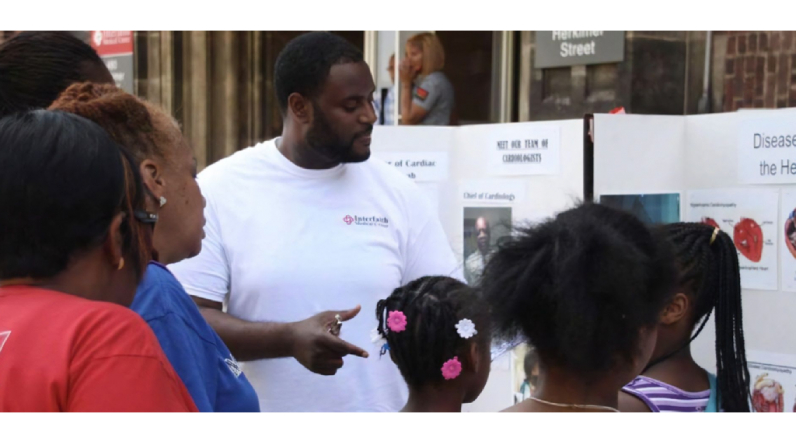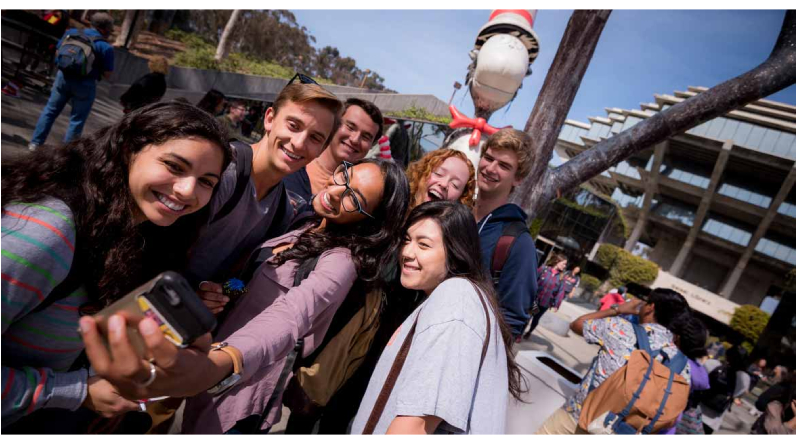In the context of UC San Diego, education is not limited to the university’s physical facilities. Faculty and students are collaborating with organisations in more than 50 countries on an estimated 400 field projects, clinical trials, startup, and other initiatives. Similarly, each year hundreds of students participate in international and other educational trips to broaden their horizons and expand their understanding of the world. To hear Tamara T. Cunningham, the university’s newly appointed inaugural assistant vice chancellor for Global Initiatives, tell it, there are no boundaries to what can be accomplished through global alliance.
For Cunningham, who started at UC San Diego in November 2022, “global is even restrictive in its own way—we are going into the universe; there’s nothing we can’t do together,” was the slogan for his campaign.
By Tamara T. Cunningham
Cunningham, who has worked in international education administration for over two decades, will create and implement a comprehensive plan to internationalise UC San Diego’s campus, consolidating the university’s current offerings while expanding international research, study, and collaboration possibilities.
She oversees a group of specialists in her role as director of Global Initiatives in Student Affairs (previously known as Global Education), where they promote globalisation through strategic international engagement and provide a friendly environment for international students and researchers. The International Office, the Office of International Faculty and Scholars, and the Office of International Students and Programs all fall under this category.
To fully realise their mission, “for a global campus of our distinction, we needed a leader whose primary responsibility was to collaborate across all aspects of UC San Diego and the world,” as Vice Chancellor for Student Affairs Alysson Satterlund put it. As a result of the efforts of AVC Cunningham, students and academics will be exposed to a wider range of cultures and their respective perspectives, values, beliefs, traditions, expertise, and experiences. There are many chances for peacemaking and new ideas to emerge when this occurs.
One’s initial thoughts
Cunningham has spent her first 100 days at the university gathering information about the institution’s extensive international activities in preparation for developing a long-term strategy for internationalisation. She bases her work on four key suggestions from the Internationalization Laboratory Report of the American Council on Education. A few examples are as follows:
Promoting academics as internationalization’s frontline champions
By tearing down walls and putting in new connections.
Growing up with a sense of global citizenship
Making a permanent Triton family
Though UC San Diego has a well-deserved reputation for international ties, the need to work with others to broaden the university’s disciplinary reach and give students access to transformative educational opportunities is greater than ever. If we are to defeat a virus as lethal and contagious as COVID-19, we will need the guidance of the world’s best doctors. The catastrophic effects of climate change can only be mitigated with the help of specialists from both the Northern and Southern Hemispheres.
Cunningham maintains that it is not negotiable for UC San Diego to provide international opportunities for its students, faculty, and research scholars. These opportunities must never be considered a luxury if we are to educate and prepare global changemakers capable of addressing global war, pandemics, and geopolitical issues with wisdom, intelligence, and compassion.
Increased assistance for the many international students and researchers who come from far away to study and contribute to the intellectual life at UC San Diego is another objective. Students from over 110 different countries enrich classrooms, research, and the opportunity to develop cross-cultural competence with their unique perspectives, knowledge, and experiences.
Opportunities like these should never be considered a luxury if we want to educate and prepare global changemakers capable of tackling catastrophic problems like war, pandemics, and geopolitical tensions with wisdom, intelligence, and compassion.
The Global Seminars Program at UC San Diego allows students to take two courses each summer. A professor from UC San Diego teaches classes in English, immersing students in the history and culture of countries ranging from Greece and Japan to Switzerland. These photographs were taken by students Ceres Trinh, Tiffany Do, and Skye Porter.

Cunningham, in collaboration with the Office of Research Affairs, is assisting educators in their pursuit of grants to fund international expansions of instruction and study. As she explains in her co-authored article “Intersections of Diversity, Equity, and Inclusion and Internationalization: A Framing Guide,” published by the American Council on Education, she is taking on this challenge by bringing together the principles of internationalisation with equity, diversity, and inclusion efforts. As part of this effort, we must think about how to make global education more welcoming to all people and incorporate discussions of equity into our courses.
How does this work in the real world? It could mean increasing funding for scholarships so that students from all socioeconomic backgrounds can go on study abroad programmes. Alternatively, helping teachers incorporate an international dimension into their lessons. And Cunningham explained that there are field projects and community engagement initiatives happening in San Diego or within the United States that can offer similarly valuable experiences for those who are interested in travelling but may not be able to, such as students who are undocumented.
“AVC Cunningham will be the impetus we need to greatly expand our already strong portfolio of international research and collaboration done in the service of global good,” said Vice Chancellor for Research Corinne Peek-Asa. Our research faculty and scholar community is one of the most active in the country, and we are excited to expand upon this strength.
Also Read : In the United Kingdom there are three institutions that nurture intelligent driven well rounded individuals
At UC San Diego, there’s already a base for these kinds of opportunities, and they have plenty of room to develop. Graduate students from UC San Diego and Israel work together over the course of 48 hours to create a business case and start-up strategy as part of an annual spring course offered by the Rady School of Management. Undergraduates at UC San Diego can participate in Global TIES to work with local and international nonprofits to create earthquake-resistant schools in Fiji and to memorialise the experiences of those affected by the COVID-19 pandemic.
Together with Mexico’s National Institute of Anthropology and History, the Cultural Heritage Engineering Initiative at UC San Diego’s Qualcomm Institute (QI) is conducting research on and preserving Maya structures and artefacts. Scott McAvoy (second from right) of QI discusses a scanning session with Helena Barba Meinecke (centre), Gabriel Quetz León (right), and Erick Sosa Rodrguez (left) of the Mexican team.
Building a stronger community of global leaders at UC San Diego
Cunningham hopes to leverage UC San Diego’s institutional partnerships to kickstart even more international activity, in addition to providing Tritons with opportunities to gain global experiences. Many international students and scholars have UC San Diego on their radar even before it was ranked 20th best in the world by U.S. News & World Report in 2022-23.
More than 2,000 foreign professors and researchers are currently at UC San Diego for various reasons, including teaching, learning, and conducting important research. According to Open Doors’ most recent report, UC San Diego is the seventh most popular U.S. university for international scholars.
Moreover, there are usually multiple facets to a partnership. In 2014, for instance, UC San Diego forged a close relationship with Kyoto University in Japan. When it comes to UC San Diego, the initial focus was on the medical school, but the resulting cross-school collaborations have since expanded to include all of the academic divisions. The University of California at San Diego and the University of Kyoto have collaborated on a number of occasions, hosting joint symposium events to advance research and knowledge. To further encourage collaborative research and academic exchange between the two institutions, the Center for Novel Therapeutics at UC San Diego is home to the Kyoto University San Diego Research Center, which opened in 2019.
In addition, there are roughly 400 active international agreements between the university and organisations and higher education institutions around the world that combine academic study with business and international experience (explore them all at partnerships.ucsd.edu). Support for dissertation research and undergraduate Human Rights Fellowships are provided by the International Institute at UC San Diego, which also coordinates and supports multidisciplinary scholarship and teaching on international issues. Funded by these multilateral partnerships and networks, students are able to gain international experience that would otherwise be out of reach, while also connecting faculty to networks of international colleagues who can spark new ideas.
Academics from the University of California, San Diego frequently travel abroad to work with their peers in other countries to make groundbreaking discoveries that help fill in the blanks of our collective past. Scholars from UC San Diego’s Cultural Heritage Engineering Institute have visited Greece, El Salvador, Switzerland, Mongolia, Spain, and many other countries to “engineer a future for the past.” This institute is part of the Qualcomm Institute. With the aid of cutting-edge conservation technology, they keep an eye on and restore irreplaceable parts of our global cultural heritage like buildings, sculptures, archaeological sites, and ecosystems.
What excites Cunningham most is the breadth of global initiatives already under way and the possibility of influencing students’ lives as they develop into global citizens. Saying, “I can’t believe I have this opportunity; every day I wake up to do this work, I feel like I’m making a real change in the world,” she expressed awe at the possibility of making such a difference. I want to approach this project with the mindset that my efforts will ripple through the ages. When you start to think about the effects on this one student’s future offspring and their offspring’s offspring, you realise that the effects are simply unfathomable.

